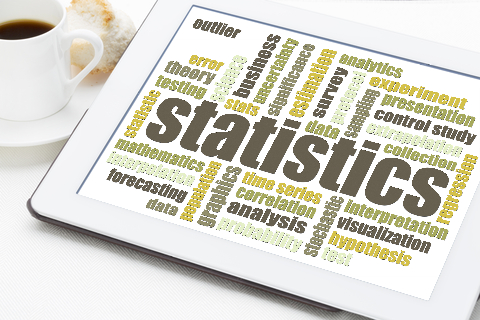What is Statistical Power in Statistics?
Statistical power is the probability of finding significant results from a test or the ability to detect an actual effect from that of chance. Statistical power is the likelihood or probability of not committing a type II error in hypothesis testing.
A type II error, also known as beta, occurs when a researcher does not have enough evidence, therefore, accepting the null hypothesis when it’s false, while a type I error is the probability of rejecting the null hypothesis when it’s true, also known as alpha. This article contains a discussion on statistical power, its components, and statistical power analysis.

Components of Statistical Power
Statistical power is dependent on the relationship among four components, the sample size, the significance level set by the researcher, the effect size, and the power of a test.
The statistical power is usually set to 80% and the significance level to .05. All the variables are related, such that statistical power can be increased by a higher significance level, while a large sample makes the effect easier to detect.
Effect Size
The effect size is the degree or magnitude of something under a study or a standardized measure that accounts for variability. It indicates how large a difference is between the two groups and the correlation between variables. In most cases, when the expected effect size is not known, a researcher uses the results obtained from previous similar pilot studies and research.
A standardized effect size is generated by combining the effect size with the variation. A large standardized effect indicates that the variable is different from the hypothesized value, therefore, making it easy to detect an effect. An increase in the standardized effect leads to an increase in the statistical power, while a small standardized effect makes it difficult for an effect to be detected.
Sample Size
Statistical power is highly associated with large samples, the larger the sample, the higher the likelihood of rejecting the null hypothesis. When a sample is large, the variation becomes smaller, thus increasing the standardized effect size, which leads to a higher statistical power. A higher statistical power is an indication of conclusive results, as the power increases, the probability of committing a type II error decreases.
Significance Level (α)
An increase in the significance level increases the statistical power of a test. A larger significance level increases the rejection regions leading to the increase in type I error and reducing the type II error. Therefore, there is a greater possibility of rejecting the null hypothesis, thus increasing the statistical power of a test.
Power Analysis
A power analysis is conducted to determine a single statistical power component given the values of the other three components. The analysis’s main aim is to make sure that the researcher does not miss any findings. There are four types of power analysis, post-hoc, priori, sensitivity, and criterion power analysis.
- A priori analysis is conducted when planning a study. It helps in determining the sample size given the effect size, statistical power, and significance value.
- The post-hoc analysis is conducted to find the amount of power needed given the sample size, significance level, and effect size.
- A sensitive analysis is conducted when the sample size, power, and significance level are predetermined to identify the effect size.
- A criterion analysis is conducted to determine the significance level given the sample size, effect size, and power.

Summary
Maximizing the statistical power of a study helps reduce the possibility of committing a type II error. The sample size, effect size, and significance level values have a great impact on increasing the statistical power and providing significant results. After conducting the power analysis, the researcher should ensure that the level of power present in the study is adequate to justify the results to avoid reporting statistically insignificant results.





